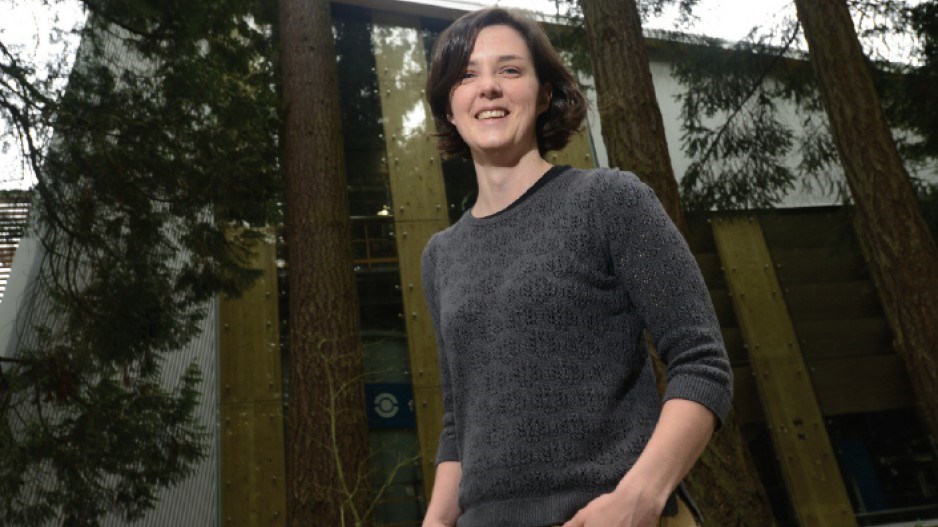It’s pretty clear that Vancouver residents feel strongly about their city’s trees. Just witness the collective angst on display after a 2006 windstorm levelled hundreds of trees in Stanley Park.
Now many Lower Mainland municipalities are making the case that trees do much more than look pretty: they’re a vital part of urban infrastructure.
“The storm water management benefits are huge,” said Mark Brown, community forester for the District of North Vancouver. “A mature tree on the coast here could be intercepting something like 4,000 gallons a year of storm water (through its roots) and canopy.”
If there aren’t enough trees, cities would have to spend more money and resources on building more storm drains, explained Brown.
“That’s a really big issue, because right now the storm systems are not always coping with the really heavy rains that we have, and that’s with good forest cover,” he said.
North Vancouver, Vancouver and Coquitlam are three municipalities in the midst of creating urban forest strategies. The idea is to treat all the trees in an urban area as one collective ecosystem. The approach isn’t just earth-friendly: it has cost benefits as well.
“It could cost $1,000 to deal with one tree, but if we’re doing area-based forest management, the costs can be reduced to less than $200-$300 per tree,” said Brown.
Risk management is also a big part of North Vancouver’s strategy. Brown’s department deals with forest root diseases and waterlogging that can make trees more susceptible to being blown over. They’re also removing dry underbrush that could increase the risk for forest fires – a concern for North Vancouver, where many backyards back onto the forest.
For the City of Vancouver, the strategy will involve planting 150,000 more trees (the city currently has 300,000 trees in parks and 140,000 street trees).
The plan calls for introducing more native trees and also more fruit trees, which will be adopted by “local stewards,” said Niki Sharma, a Vancouver Parks Board commissioner.
“One of the concepts that we’re trying to introduce is something about forest cover, particularly in parks, where you could develop an urban forest canopy in different areas,” said Sharma. “A forest canopy provides a lot of the benefits of the trees, just magnified.”
Urban forests also play a big role in climate change mitigation for cities.
“Things like shading south-facing building facades can help to cool down a building without using a lot of air conditioning,” said Sara Barron, a landscape architecture who is researching urban forestry at UBC. “We’re starting to get really hot, dry summers, so having those trees in people’s front yards will really help to cool down buildings without using air conditioning.”
In addition to cooling down cities, healthy trees also sequester carbon and reduce air pollution, said Brown. Wood waste collected from parks and street trees can also be used in bioenergy plants, like UBC’s Nexterra plant. The District of North Vancouver sends its unwanted logs, sticks and brush to a facility in Powell River and is debating whether to build its own.
In suburban areas, where Barron plans to focus her research, there’s potential to manage small woodlots in vacant lots or gas stations awaiting remediation. Those stands of trees could be made up of a quick growing tree like cottonwoods, and be used to provide bioenergy fuel.
“Municipalities are increasingly looking at district energy systems, and biomass is an option,” said Barron.
But there’s another powerful reason to focus on urban trees: they make us feel good.
“The research I know of is from hospitals,” said Barron. “If you’re looking out the window at a tree, your recovery time is faster, and you’re happier.”
Barron plans to tap into that love of trees in her research. She wants to find ways to involve community residents in the planning process.
“People tend to just look at their property in isolation,” she said. “Once you draw the picture of how it connects to a larger system, they might be more inclined to plant things to support that system … . We want people to be happy and love their environment.”
The urban jungle greens up
Urban forest enthusiasts in Vancouver take inspiration from an unlikely source: the Big Apple.
New York City Parks and the New York Restoration Project have launched the Million Trees NYC campaign. Project organizers hope to plant one million trees in New York’s five boroughs by 2020.
The City of New York has committed to planting 70% of the trees in parks and public spaces; the other 30% will come from private organizations and homeowners.
“It’s kind of a neat initiative that really speaks to the importance of trees in a city, and all the benefits they provide,” said Niki Sharma, a Vancouver Park Board commissioner. “And also how everybody can get involved to reach the goals of a more vibrant urban forest.”
Million Trees NYC is currently at 662,111 trees – and counting.




